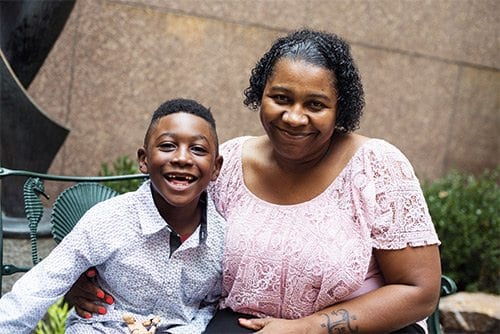
School nurses see their fair share of asthma. “In 2015-16, we had 10,724 patients with a documented diagnosis of asthma,” explained Patricia Kenney, nurse liaison for Children with Special Health Care Needs in the Boston Public Schools That amounts to almost 19 percent of the student population.
Minorities are hit particularly hard, according to “The Facts about Pediatric Asthma in Boston,” a publication of the Massachusetts Department of Public Health. The asthma-related rates for emergency department visits and hospitalizations between 2008 and 2012 for black and Hispanic children were roughly five and four times higher, respectively, than white children.
That poses a challenge for school nurses. The School and District Profiles indicate that African Americans and Hispanics make up 73.6 percent of the 2016-2017 enrollment in the Boston Public Schools.
Fortunately, the BPS has a protocol in place to help manage asthma in the school setting. Two required signed forms will start the process. The Medication Order signed by a provider lists all prescribed medications and any special instructions, while the Medication Authorization Form signed by the parent allows the nurses to administer the meds. Generally, children younger than nine require assistance. The Medication Self-Administration Form, however, allows students to treat themselves after a nurse has observed and approved their technique.
A critical partnership
Share these forms with the school nurse:
- The Medication Order that lists the student’s prescribed drugs
- The Medication Authorization Form, which gives nurses permission to administer medication
- The Medication Self-Administration
- Form that allows your child to administer the medications without assistance
- Asthma action plan
The problem is parents have to set this protocol in motion, but some are unaware of or misunderstand the required procedures. There is a misperception that doctors automatically inform schools that a child has asthma. “That’s not true,” said Mary White, a Parent Asthma Leader and member of Healthy Schools Initiative. “You have to request it.”
When not notified, nurses often learn about a student’s diagnosis after an attack occurs. “We send for physician orders and medication once we are aware,” explained Kenney.
People with asthma — even those whose conditions are well controlled — require rescue inhalers. A Massachusetts law allows students with asthma to carry and use prescription rescue inhalers as needed. School nurses, however, first observe their technique. Errors in use of inhalers is one of the leading causes of asthma attacks.
Regardless of precautions taken, flare-ups are bound to happen. Physical exertion from gym class, upper respiratory infections and allergies cause frequent visits to the clinic. At times the school itself is the source of problems. Cleaning agents, dust and rodents are common triggers in the school. MassCOSH (Massachusetts Coalition for Occupational Safety and Health) provides support and strategies to reduce asthma triggers and improve school environmental conditions.
Parents entrust the care of their children to school nurses for six hours each weekday. A partnership with that nurse — especially for parents of children with asthma — is the first step to keep your child in the classroom instead of the clinic.
For more, visit: www.bostonpublicschools.org/healthservices






